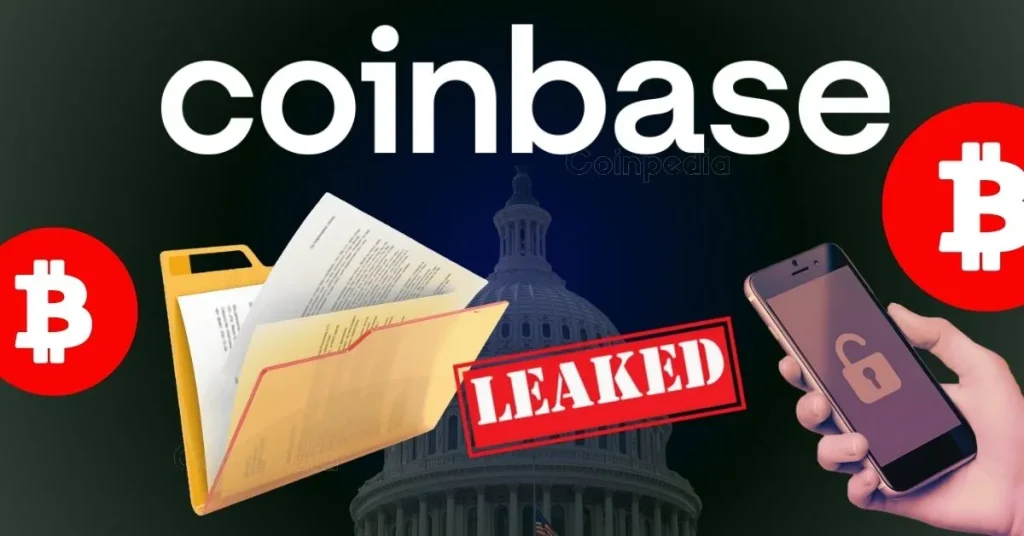Michael Arrington Warns Coinbase Hack Could Lead to Deaths – Here’s Why

The post Michael Arrington Warns Coinbase Hack Could Lead to Deaths – Here’s Why appeared first on Coinpedia Fintech News
In a shocking security lapse, a recent data breach at Coinbase – the world’s third-largest cryptocurrency exchange – has ignited serious safety concerns. Hackers reportedly accessed highly sensitive user data, including residential addresses, sparking fears of real-world violence amid a surge in crypto-related crimes in 2025.
Although the breach affected less than 1% of monthly transacting users, the fallout is steep. Coinbase could be staring down as much as $400 million in reimbursement – but the potential “human cost” may be far worse.
“People Could Die”: Michael Arrington Blasts CoinbaseMichael Arrington, TechCrunch founder and Arrington Capital head, slammed Coinbase on X for a data breach exposing addresses and balances, potentially causing deaths.
“Very disappointed in Coinbase right now. Using the cheapest option for customer service has its price,” Arrington said.
Arrington blamed Coinbase’s overseas customer support outsourcing and even went as far as to call for criminal charges against executives. He also took a swipe at KYC regulations, arguing they’re more about tax collection than user safety – ultimately creating honeypots of data that hackers are all too eager to exploit.
Balaji Srinivasan Disagrees with Michael Arrington’s TakeThe co-founder and former CTO of Coinbase, Balaji Srinivasan, disagrees with Arrington’s view that blames Coinbase execs for the $400M hack. Instead, he blames the state’s KYC laws. Why? These laws force firms to collect vulnerable customer data, creating hacking risks.
He advocates for Zero-Knowledge (ZK) proofs to eliminate KYC and prioritize privacy over surveillance. Balaji says systemic regulatory flaws, not executive decisions, are the root cause of such breaches.
.article-inside-link { margin-left: 0 !important; border: 1px solid #0052CC4D; border-left: 0; border-right: 0; padding: 10px 0; text-align: left; } .entry ul.article-inside-link li { font-size: 14px; line-height: 21px; font-weight: 600; list-style-type: none; margin-bottom: 0; display: inline-block; } .entry ul.article-inside-link li:last-child { display: none; } Armstrong’s Actions After Security BreachThe leaders aren’t sitting around. On May 15, 2025, via a video statement on X, Coinbase CEO Brian Armstrong confirmed the breach in a social post, revealing hackers demanded a $20 million ransom, to which he said, “No, we are not going to pay your ransom.”
Armstrong promised full reimbursement for impacted users (1%) and announced plans to rebuild customer service.
Crypto Crimes on the Rise: Is Your Data Safe in 2025?This breach is just the latest in a string of violent incidents involving crypto investors. As Bitcoin trades above $100,000, crypto wealth is becoming an increasingly dangerous asset.
As the dust settles, all eyes are on Coinbase. Can Armstrong deliver on his promises? Will the exchange’s security overhaul be enough to restore user trust? Or has the damage already been done?
.article_register_shortcode { padding: 18px 24px; border-radius: 8px; display: flex; align-items: center; margin: 6px 0 22px; border: 1px solid #0052CC4D; background: linear-gradient(90deg, rgba(255, 255, 255, 0.1) 0%, rgba(0, 82, 204, 0.1) 100%); } .article_register_shortcode .media-body h5 { color: #000000; font-weight: 600; font-size: 20px; line-height: 22px; text-align:left; } .article_register_shortcode .media-body h5 span { color: #0052CC; } .article_register_shortcode .media-body p { font-weight: 400; font-size: 14px; line-height: 22px; color: #171717B2; margin-top: 4px; text-align:left; } .article_register_shortcode .media-body{ padding-right: 14px; } .article_register_shortcode .media-button a { float: right; } .article_register_shortcode .primary-button img{ vertical-align: middle; width: 20px; margin: 0; display: inline-block; } @media (min-width: 581px) and (max-width: 991px) { .article_register_shortcode .media-body p { margin-bottom: 0; } } @media (max-width: 580px) { .article_register_shortcode { display: block; padding: 20px; } .article_register_shortcode img { max-width: 50px; } .article_register_shortcode .media-body h5 { font-size: 16px; } .article_register_shortcode .media-body { margin-left: 0px; } .article_register_shortcode .media-body p { font-size: 13px; line-height: 20px; margin-top: 6px; margin-bottom: 14px; } .article_register_shortcode .media-button a { float: unset; } .article_register_shortcode .secondary-button { margin-bottom: 0; } } Never Miss a Beat in the Crypto World!Stay ahead with breaking news, expert analysis, and real-time updates on the latest trends in Bitcoin, altcoins, DeFi, NFTs, and more.
.subscription-options li { display: none; } .research-report-subscribe{ background-color: #0052CC; padding: 12px 20px; border-radius: 8px; color: #fff; font-weight: 500; font-size: 14px; width: 96%; } .research-report-subscribe img{ vertical-align: sub; margin-right: 2px; }Stay tuned as the story develops – and as the crypto community demands answers, reforms, and accountability.
FAQs How many Coinbase users were affected by the data breach?he data breach affected less than 1% of Coinbase’s monthly transacting users, though the potential financial and human costs are significant
Did Coinbase pay the hacker ransom after the breach?No. CEO Brian Armstrong confirmed Coinbase refused to pay the $20 million ransom demand.
